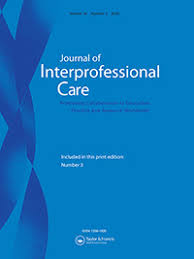How poor collaboration can result in inefficient management of human and financial resources.
How poor collaboration can result in inefficient management of human and financial resources.

Poor collaboration can lead to the inefficient management of human and financial resources due to ineffective communication patterns and conflicting ideologies.
Busari et al. (2017) describe collaboration in healthcare as “the capacity of every healthcare professional to effectively embrace complementary roles within a team, work cooperatively, share responsibilities for problem-solving, and make the decisions needed to formulate and carry out patient care” (p. 228).
In this sense, interprofessional and interdisciplinary collaboration between nurses, physicians, and other stakeholders enhances collective awareness and promotes knowledge and skills.
Amidst the need to deliver quality care in scenarios of financial and human resource constraints, team performance and collaboration enable healthcare professionals to pool skills and competencies together to enhance process effectiveness. In the Vila Health experience case study, it is clear that ineffective collaboration between the Healthix team and local stakeholders affected the overall utilization of financial and human resources to realize the collective objective of implementing the Healthix record system.
The best leadership strategies for enabling interdisciplinary teams to achieve collective goals
Appropriate leadership and change management strategies are crucial in enhancing the team’s effectiveness and ability to realize goals. Xu (2017) proposes transformational and participative leadership as appropriate styles to guarantee proper change management. The author suggests that the transformational leadership style enables nursing leaders to create an ideal impact, motivate followers, integrate intellectual stimulation, and incorporate personal considerations in decisions. On the other hand, participative leadership allows followers to connect and participate in the change management process by being more committed to goals.
Transformational and participative leadership styles complement other strategies for ensuring team effectiveness. Buljac-Samardzic et al. (2020) contend that a lack of team performance is a primary point of susceptibility to quality and safety of care. Further, the authors argue that organizational interventions, including simulation training, effective resource management, and interprofessional collaboration, are practical strategies for enhancing team effectiveness.
In the Vila Health experience, proper change management and leadership strategies were inadequate because they failed to uphold the tenets of interprofessional collaboration. This aspect jeopardized the adoption of Healthix electric health records systems.
In conclusion, interprofessional collaboration is an essential aspect of organizational change in the healthcare sector since it enables stakeholders to consolidate efforts, manage resources, and focus on achieving collective outcomes. The Vila Health experience shows that a lack of stakeholder engagement and participation presents a primary weakness when embracing new ways. Also, change management and leadership strategies determine the trajectories of institutional change by determining the levels of resource management and structural alignment to new ways.
Capella NURS-FPX 4010 Assessment 1 Reflection Video References
Buljac-Samardzic, M., Doekhie, K., & van Wijngaarden, J. (2020). Interventions to improve team effectiveness within health care: a systematic review of the past decade. Human Resources for Health, 18(1). https://doi.org/10.1186/s12960-019-0411-3
